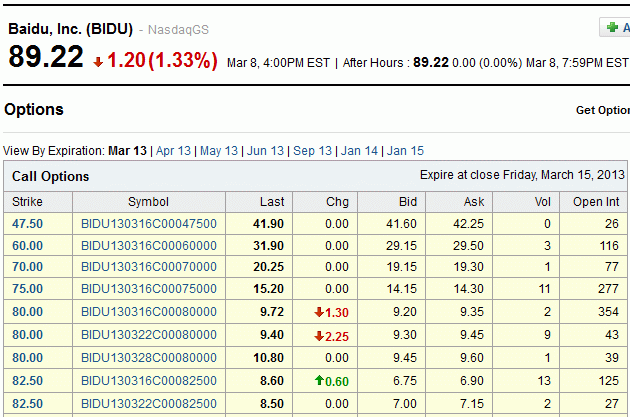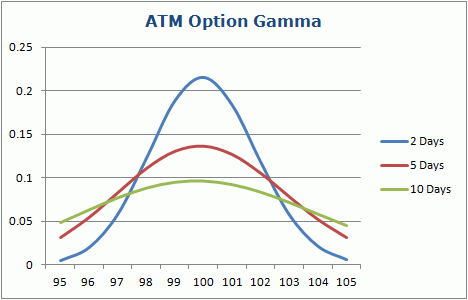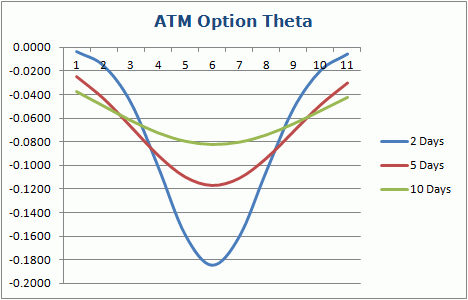Weekly Options

Baidu Option Series for March
While looking at an option chain, you may have come across an underlying where there are two or more option contracts listed for the same strike price, where one or more of the options has market prices significantly higher than the other. How can this be? What you're seeing are listed weekly options.
Weekly options (aka "Weeklys") are calls and puts listed with one week expiration dates. They are typically listed on a Thursday and expire on the Friday of the following week. The Friday is both the last trading day and the expiration date (this is also referred to as "PM Settled").
Weekly's are an initiative of the CBOE and were created to stimulate the trading activity of retail option traders. The idea is that due to the short expiration dates these short term options - being more sensitive to changes in the underlying price - would be more attractive to speculators.
Extended Weeklys
It didn't take long for Weeklys to take off and the CBOE decided to list more. The CBOE couldn't really call them bi and tri weeklys, so they simply referred to options longer than a week but less than typical serial options as "extended weeklys". So now, on some stocks, depending on the time of year it is possible to have 4 option expirations within the one month!
Out of the possible 4 series, 3 would have been listed on the first Thursday of the month (weekly) plus the standard serial month option contracts.
How to spot the Weeklys
One key specification difference between standard options and Weeklys are when they "expire" in relation to their last trading day. When options were first listed 40 or so years ago settlement procedures were handled manually so the expiration day was the day following the last trading day - and this format has been the same since inception.
Weeklys originated at a time where technological advances have meant it is not possible for the options to settle on the same day as their last trading day.
The CBOE distinguish between the two by specifying the settlement method as being either AM or PM settled. I.e. AM settled means that the option expires/settles the morning following the last trading day where PM expires/settles on the same day. Thus, Weekly options expire the same day as their last trading day, which will be a Friday while standard options expire on a Saturday with the last trading day being on the Friday prior.
By knowing this you can identify Weekly options by their ticker symbol.

Baidu Option Series for March
In this example there are 3 options listed on BAIDU for the 80 strike call with the following tickers;
BIDU130316C00080000
BIDU130322C00080000
BIDU130328C00080000
The first 4 characters represent the underlying ticker code. The next 6 numbers describe the expiration date in the format YYMMDD. Followed by C or P for call or put and the final 8 numbers note the strike price.
Going from this format we have expiration dates as 16th, 22nd and 28th: Saturday, Friday and Thursday respectively. The series expiring on the 16th is obviously a quarterly option and 22nd a Weekly option. But what about the 28th...it expires on a Thursday?
Well, Friday the 29th is Easter Friday and therefore a non-trading holiday. Options due to expire on holidays are moved to the closest available trading day, which in this case is a Thursday. Meaning BIDU130328C00080000 is also a Weekly option.
What can you trade with Weeklys?
At the time of writing (update 28th Feb, 2013), weekly options are only available on US underlyings. However, you have many to choose from. Weekly options are available for trading on over 180 different underlyings: 150 equities (stocks), 6 indices and 29 ETFs (exchange traded funds). You can take a look at the complete list from the CBOE;
As with standard options, I'd say that the most popular weeklys to trade are;
DJX - Dow Jones Index
NDX - Nasdaq 100 Index
OEX - S&P 100 Index
SPX - S&P 500 Index
GLD - SPDR Gold Trust ETF
EEM - iShares MSCI Emerging Markets Index
IWM - iShares Russell 2000 Index Fund
QQQ - PowerShares
SPY - SPDR S&P 500 ETF
XLF - SPDR Financial Select Sector ETF
Why Trade Weeklys?
Weeklys are generally traded by speculators taking a view on an underlying with the expectation of capitalizing on a favorable move in the underlying asset. They trade weeklys for this purpose as the market prices of the options respond faster and in greater magnitude to changes in the stock/future price.
The reason shorter term options are more sensitive can be explained by the option gamma. Take a look at this graph:

At-the-money Option Gamma
The above graph shows the gamma for an option over 3 different time frames: 5 days, 30 days and 90 days.
As you probably know the gamma of an option indicates how fast the delta of an option will change in response to a 1 point move in the underlying. And the delta, of course, tells us how much the market price of the option can be expected to move as a result of a 1 point move in the underlying.
So in the graph, you'll notice that the gamma values are higher (around the ATM point) as the option approaches the expiration date. But more importantly is that the speed of the gamma - or the steepness - is greater when there is less time to expiration. This results in faster changing deltas and therefore faster moving option prices (provided that the underlying does indeed move in the desired direction).
The Inverse of Gamma - Theta
The downside to Weeklys is rapid time decay. Yep, you have a lot to gain if the market moves in your favor, however, Gamma's nemesis is Theta. If the market stays still, or moves against you, the time value decay on the option price is just as intense. For example, check out this theta graph on a $100 ATM call with 5 days to expiration;

At-the-money Option Theta
Short or neutral strategies that benefit from decaying option prices are good here - long condors, short strangles, short straddles or even covered call strategies.
There are zero comments
Add a Comment